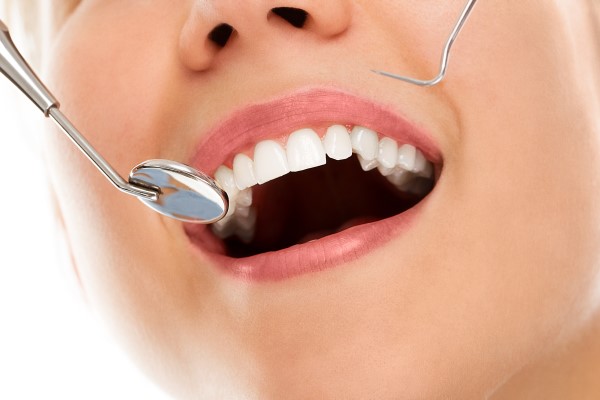The Types of Gum Disease

Gum disease may be reversed if caught early on; however, this is not the case as the condition advances. Read on to learn more about this oral health condition. Patients need to learn to watch out for signs of gum disease and go for general dentistry treatment. However, it may be helpful to know that there are various distinct forms of periodontal disease.
What are the different types of gum disease?
The following are the two main kinds of gum disease:
Gingivitis
Gum disease starts as gingivitis, which is the first stage of the illness. It is the result of an accumulation of bacterial plaque and tartar along the gum line. Plaque may form below the gum line and cause a bacterial infection if not eliminated with excellent dental care and hygiene. Gingivitis is an inflammatory disorder of the gum tissue around the teeth caused by bacterial activity. Some of the symptoms include swollen gums, bleeding gums, and a dark red color.
A dentist can treat gingivitis simply and efficiently by performing a thorough dental cleaning and scaling. Without treatment, gingivitis may progress to periodontitis, a much more severe condition that can permanently harm the gums and jaw bone and contribute to tooth loss.
Periodontitis
Chronic periodontitis develops from untreated gingivitis. Little pockets develop between the teeth and gums when bacteria spreads below the gum line, causing more discomfort and chronic inflammation. These pockets are known as periodontal pockets, and as they deepen, bacterial colonies inside them have more room to multiply and damage connective tissue. Periodontal pockets may get infected with even more dangerous oral bacterial species, leading to bone loss and jawbone damage.
Since this progressive degeneration happens around the teeth, patients may notice mild symptoms at first instead of a terrible toothache produced by an infection inside the tooth cavity. Tooth extraction or loss may occur if the gum tissue breaks away from the tooth surfaces to the point that the tooth does not have sufficient support in its socket any longer.
Periodontitis also has different levels, including:
Aggressive periodontitis: This occurs when the disease progresses rapidly. This form often results in rapid degeneration of the gingival tissue and ligament and bone degeneration.
Chronic periodontitis: This is the most common type and causes inflammation of the supporting tissues of teeth, deep gum pockets, and gum recession, as well as bone loss. It is more common in adults, although it may strike anybody at any age. Attachment loss normally progresses slowly, but there are times when it accelerates.
Gum disease FAQs
The following are some frequently asked questions about gum disease:
Who is at risk of gum disease?
Although age is the primary risk factor for periodontal disease, there are a number of additional variables that might increase susceptibility. Patients who smoke, are overweight, or have poor diets are at greater risk. Also, patients should also see their doctor and dentist before starting any new medication since some have been found to raise the risk of gum disease. There are some hereditary correlations to periodontal disease, but for the most part, lifestyle adjustments may help reduce the chance of developing the condition.
Is there a link between periodontal disease and other health issues?
The condition of the oral cavity has a direct impact on the state of one’s entire health. Inflammation or a buildup of bacteria in the mouth may rapidly spread to other parts of the body, resulting in further health issues. Studies show patients may be more at risk for chronic conditions like cancer, lung illness, heart disease, and Alzheimer's because of gum disease. Thus, it is important to prevent and treat periodontal disease early on.
What are the treatment options for periodontal disease?
There are various periodontal disease treatments the dentist might recommend after a diagnosis. After evaluation, the dentist may prescribe scaling and root planing, which is a non-surgical therapy that includes the removal of plaque and smoothing of any rough places where plaque and bacteria tend to accumulate. The procedure will keep bacteria at bay and enable gums to grow back to protect the teeth.
Pocket reduction, gum grafts, or bone grafts may be necessary for more advanced situations. These periodontal operations aim to remove germs and damaged tissue to help the gums and bone repair and improve dental health.
The bottom line
Gum disease may be treated or limited in many ways. It is important to follow the dentist's advice for regular oral care at home to optimize treatment outcomes. That involves brushing your teeth twice a day and flossing every day, as well as going to the dentist for checkups and professional cleanings regularly. If you have noticed signs of gum disease, reach out to our dental office as soon as possible.
Request an appointment here: https://www.roderickgarciadmd.com or call Roderick A. Garcia, DMD PC at (505) 634-5029 for an appointment in our Albuquerque office.
Check out what others are saying about our dental services on Yelp: Gum Disease in Albuquerque, NM.
Recent Posts
Gum disease is also known as periodontal disease. This is a condition that causes inflammation of the tissue around the patient’s teeth. It is caused by bacteria building up in the area. Keep reading to learn about some of the symptoms of gum disease.Periodontal disease is a progressive condition, meaning it gets worse over time.…
Gum disease is a serious condition that can result in a need for periodontal treatment. Periodontal treatment is often necessary to destroy the infection and prevent it from worsening. Often, without treatment, a case of gum disease can become advanced, resulting in tooth loss, receding gums, and even jaw deterioration, all of which can be…
A gum grafting procedure is an effective way to regain your oral health. This procedure can rebuild the gum tissue over your teeth. Gum tissue holds and protects your dental roots from exposure. It is important to re-establish a healthy gumline to keep your teeth intact. If you are wondering if you need a gum…
Looking for some tips so you can avoid periodontal surgery? Good idea. More commonly known as gum surgery, this type of surgery is often performed on those who have been diagnosed with a gum disease, like gingivitis or periodontitis. Ongoing mouth problems will eventually lead to a loss of bone and tissue, which can often…


